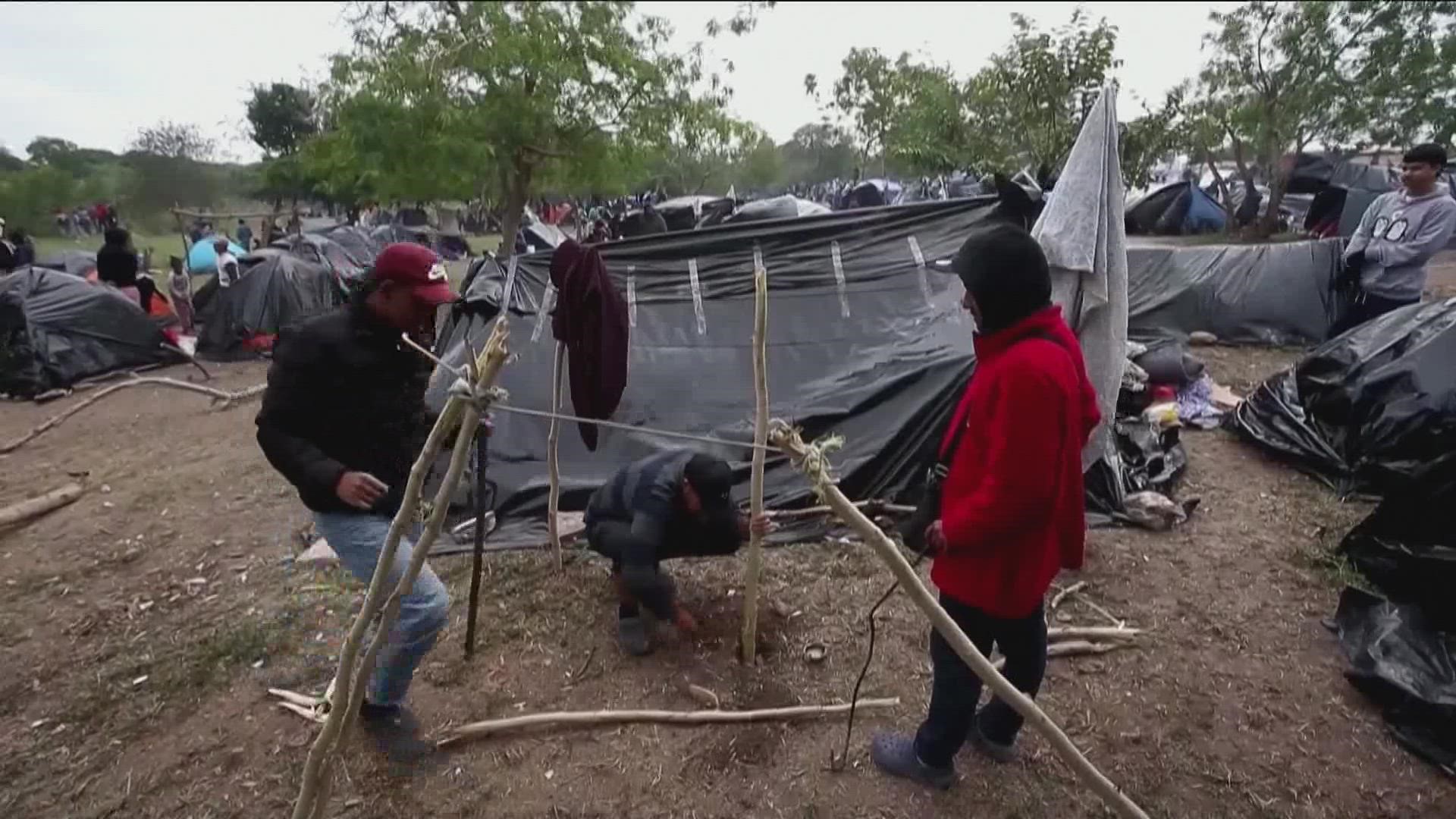SAN DIEGO —
More asylum-seekers are arriving at the Mexican border with the United States as the US Supreme Court considers whether to end a pandemic-era policy limiting border crossings.
Title 42 was set to expire Wednesday, but the High Court allowed it to stay in place, at least temporarily. The Biden Administration is in favor of letting the asylum restrictions end, but it asked the Court to leave the policy in place until after Christmas.
Just on the other side of San Diego’s border with Mexico, thousands of asylum seekers are waiting for Title 42 to be lifted and to come to the U.S.
CBS 8 spoke with Republican County Supervisor Joel Anderson and a local immigration advocate with The American Friends Service Committee, both say that if and when those people cross the border that it’s going to overwhelm the system.
Says Supervisor Anderson, “We need to have a plan in place that doesn't punish our communities and yet welcomes those folks coming across the border. And the County doesn't have the resources to do it.”
Anderson says he’s sounding the alarm.
He says the federal and state governments must send resources to places like East County once people are allowed to seek asylum in the U.S. Anderson says many migrants could actually end up on the street.
He says it’s unfair to encourage people to come here, and then drop them off in the street with no help.
Anderson says the East County has the highest number of asylum seekers in the nation, west of the Mississippi River. He says it’s a community that welcomes people from other countries wanting a fresh start, but it’s not a wealthy district and doesn’t have the resources to absorb all the migrants expected to come here once Title 42 is no more.
“We want to welcome them, but we can’t have government policies that fail both them and us," said Anderson. "Without those resources, you are literally putting people on the streets in the dark of night. All these people are going to come and they’re going to need food, shelter, and clothes. What are these people going to do when they are in the huddled masses on our street? This is not the way we welcome people to the country who are leaving horrible circumstances by creating horrible circumstances for them.”
Many migrants entering the country need help to secure food, shelter, clothes, healthcare, legal support, and transportation.
Catholic Charities, Jewish Family Services, and other private organizations try to help provide what’s called wrap-around services to help get them on their feet. But the influx of migrants expected when Title 42 lifts, they say, will overwhelm the system.
Immigrant advocate Pedro Rios says, “I want to see a commitment by the federal government to the asylum procedures. Real measures that prioritize the meeting of the human needs and the humanitarian needs that migrants have.”
Rios was just in Texas where he saw what a border town looked like for migrants without necessary resources.
“I saw a lot of people, presumably migrants that were walking around, congregating in the streets, in the bitter cold. It was freezing. Not necessarily having information about where to go. Some of them being lost. And generally a lot of confusion about what’s to come and what their future might be.”
Supervisor Anderson says he expects 400-1500 people to come into El Cajon once the pandemic-era policy is over.
Added Anderson, “Where’s the housing? Where’s the shelter? There’s none. There’s no infrastructure.”

